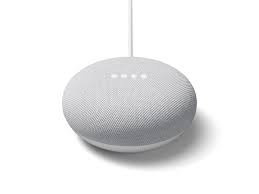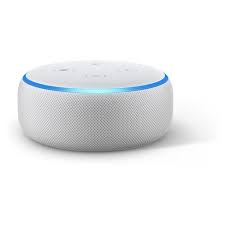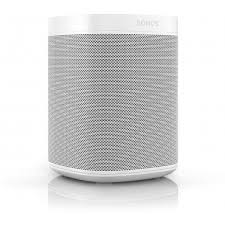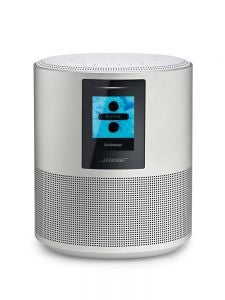Over the past few years, smart speakers have become a staple of the always switched-on home. Through voice command alone, they give you control over an ever-growing range of services.
From playing music, to accessing the latest news and weather information, to controlling the different smart devices connected to your home network, smart speakers are like digital assistants that respond to your every voice command.
Up until recently, tech giants Google and Amazon have dominated the smart speaker market. However, now there is a range of speakers from different manufacturers to choose from.
So, if you’re keen to get chatty with a digital assistant, check out Canstar’s up-to-date guide on smart speakers:
Digital assistant: Google Assistant or Amazon Alexa?
A critical component of choosing a smart speaker is choosing the right digital assistant for your needs. Currently, Google Assistant and Amazon Alexa are the two main choices.
When it comes to basic functions, both digital assistants will get the job done. Common tasks include: setting an alarm, web searches, making a phone call, and supporting a range of everyday services, including music and video streaming.
However, in navigating more advanced applications, such as controlling multiple smart devices on a home network, it’s important to consider compatibility. This involves committing to one platform across the range of devices you are using.
Always compare the capabilities of the digital assistants you are considering in the context of your requirements. Full details are available via the Google Assistant and Amazon Alexa websites. And keep in mind that assistants are constantly being updated to incorporate new services.
Smart speaker audio quality, privacy and other factors
Audio quality should, of course, be a consideration when buying a smart speaker. As covered in the guide below, manufacturers such as Sonos and Bose are offering smart speakers designed to deliver an enhanced audio experience.
However, it’s also important to keep in mind that some smart speakers can be used in conjunction with home theatre set-ups. This allows for the connection of external speakers. So, research how a smart speaker fits in alongside your other audio devices.
When it comes to privacy, many smart speakers feature a microphone mute button, which users can activate when the speaker is not being used. Given security is always a concern where the internet is concerned, always check a device’s security settings and privacy practices.
Additional factors to consider include:
- Voice control – what sort of microphone and voice recognition technology is used. How does a smart speaker perform in different (potentially loud) environments?
- App support – what apps does it support, and what range of services do they provide?
- Connectivity – is wi-fi and/or Bluetooth supported?
- Mains power or battery – many smart speakers use mains power, however battery-powered models provide extra portability.
- Setting up and device compatibility – how easy is the process? Are there any specific considerations that need to be taken into account (such as integration with existing smart devices)?
Placement is another consideration. Fortunately, most smart speakers are compact and don’t take up much room, but always consider where you’re going to position it in your home. If you’re primarily running it off the mains, it has to be close to a socket. It also needs access to a strong wi-fi signal.
Smart speakers
The following guide covers a range of smart speaker options, including popular, entry-level offerings from Google and Amazon, along with Sonos and Bose speakers designed to deliver enhanced audio quality.

Google Nest Mini
As the name suggests, Google’s Nest Mini is small! It’s 98mm wide, has a height of 44mm and weighs 181g. It’s also partly made from recycled plastic bottles.
The new second-generation Nest Mini delivers richer sound with more bass, thanks to a bigger speaker. And improved voice recognition allows users to ask for help from across the room, thanks to three far-field microphones and Voice Match technology.
Features include:
- Digital assistant – Google Assistant built-in.
- App control – Google Home (Android and iOS).
- Physical controls – capacitive touch controls, including volume adjustment and a mic switch, which turns bright orange when off.
- Connectivity – 2.4GHz and 5GHz wi-fi, and Bluetooth 5.0, with Chromecast built-in.
- Power – Mains power.
Price: approx $89*

Amazon Echo Dot (3rd Gen)
The Echo Dot is both Amazon’s most popular and most compact smart speaker. The Echo Dot (3rd Gen) measures 99mm x 99mm x 43mm and weighs 300g.
The new generation Echo Dot boasts improved speaker quality, while four far-field microphones allow it to hear users from across the room.
Features include:
- Digital assistant – Amazon Alexa.
- App control – Amazon Alexa (Fire OS, Android and iOS, and accessible via web browser).
- Physical controls – volume up/down, action button, mic off button.
- Connectivity – 2.4GHz and 5GHz wi-fi, and Bluetooth – can connect to an external speaker via Bluetooth or a 3.5mm stereo audio output.
- Power – Mains power.
Price: approx $89*

Sonos One
The Sonos One sports a compact, portable design measuring 161.45mm x 119.7mm x 119.7mm and weighing 1.85 kg. It’s humidity resistant, which allows it to be used in the bathroom.
The bigger, heavier speaker design delivers a rich, room-filling sound, and two Sonos Ones can be paired together in the same room for stereo sound. A far-field microphone array is used for smart voice capture and noise cancellation.
Features include:
- Digital assistant – Amazon Alexa built-in, and compatible with Google Assistant.
- App control – the Sonos S2 app (Android, iOS, PC and Mac); also works with AirPlay 2.
- Physical controls – capacitive touch controls for volume up/down, previous/next track, play/pause and microphone mute. An LED indicates when the microphone is active).
- Connectivity – 2.4GHz wi-fi and a 10/100 Mbps Ethernet port, allowing for direct connection to a router.
- Power – Mains power.
Price: approx $349*

Bose Home Speaker 500
The Bose Home Speaker 500 sports a seamless, anodised aluminium body, with a top-to-bottom grille, and a full-colour LED screen that displays now-playing information. It’s the biggest and heaviest of the smart speakers reviewed here, measuring in at 203mm x 170mm x 109mm, and weighing a hefty 2.15 kg.
Bose describes the Home Speaker 500 as capable of filling a room with wall-to-wall stereo sound. It boasts two custom drivers pointing in opposite directions that bounce sounds off walls. Voice pick-up technology and an eight-microphone array allow the speaker to hear you even when you’re pumping your jams!
Meanwhile, Bose SimpleSync technology allows for the grouping of the Home Speaker 500 with other compatible Bose products.
Features include:
- Digital assistant – Google Assistant and Amazon Alexa built-in.
- App control – the Bose Music app (Android and iOS); also works with AirPlay 2.
- Physical controls – microphone off, voice action button, volume, play/pause, aux, Bluetooth and six preset buttons.
- Connectivity – 2.4GHz and 5GHz wi-fi and Bluetooth 4.2.
- Power – Mains power.
Price: approx $619*
*Further information on pricing can be found at individual retailer websites.
Compare broadband providers for free with Canstar!
Enjoy reading this article?
You can like us on Facebook and get social, or sign up to receive more news like this straight to your inbox.
By subscribing you agree to the Canstar Privacy Policy


Share this article